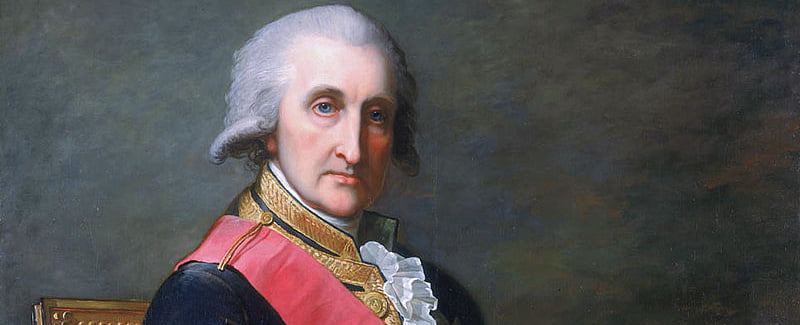
Home - Directories - Orders of Knighthood and Chivalry - The Most Honourable Order of the Bath
From Saxon times until the Coronation of King Charles II on great Royal occasions it was customary to confer “a degree of Knighthood” which, from the ceremonies associated with it, became known as the Knighthood of the Bath. Drawing on this ancient tradition, in 1725 King George I created a new military Order and called it the Order of the Bath. The Order was enlarged in 1815 and further extended in 1847, when new statutes regarding appointments were promulgated and the Civil branch established; the statutes were subsequently modified in 1905 and 1912. Under date of July 1925, all former statutes were repealed, and revised and consolidated statutes and ordinances were promulgated; these were further revised in 1930, 1936, 1939, 1969, 1973 and 1995. The Order now consists of three classes, each comprising two divisions (military and civil):
(i) KNIGHTS AND DAMES GRAND CROSS. These Knights and Dames are entitled to receive a grant of supporters to their armorial bearings.
(ii) KNIGHTS AND DAMES COMMANDER. Each Knight of the Order is entitled to the distinctive appellation of knighthood.
(iii) COMPANIONS. The Military division is open to Officers of the Navy, Army, and Air Force, and Naval, Military and Air Forces of the Commonwealth Countries.
The Order consists of not more than 120 Knights and Dames Grand Cross (of whom the Great Master is the First and Principal), 355 Knights Commander and Dames Commander, and 1,925 Companions exclusive of Honorary Members and any Additional Members who may have been or may be appointed.
The Insignia are:
(i) the COLLAR of gold (weighing thirty ounces troy), composed of nine Imperial Crowns or and eight roses, thistles, and shamrocks, issuing from a gold sceptre, and enamelled in their proper colours, linked together with seventeen knots enamelled argent, and having therefrom the Badge of the Order.
(ii) The MILITARY KNIGHT AND DAME GRAND CROSS STAR is formed of rays of silver, charged with a Maltese cross or, in the centre whereof on the ground argent three Imperial Crowns, one and two or, the said three Imperial Crowns within a circle gules inscribed with the motto of the Order, Tria juncta in uno, in letters of gold, and the said circle encompassed by two branches of laurel proper, issuing from an escrol azure inscribed Ich dien in letters of gold.
(iii) CIVIL KNIGHT AND DAME GRAND CROSS STAR is of rays of silver issuing from a centre and charged with three Imperial Crowns, one and two within a circle gules whereon is inscribed the motto of the Order in gold. The Collar and Badge are returned at death to the Central Chancery, but not so the investment Badge and Star.
(iv) MILITARY KNIGHT AND DAME COMMANDER’S STAR is composed of four rays of silver, between each of which issues a smaller ray, also of silver, and has the same centre as the Knights Grand Cross, but without a gold Maltese cross thereon.
(v) CIVIL KNIGHT AND DAME COMMANDER’S STAR is of the same form and size, but without a laurel wreath round the circle containing the motto and the escrol, and without the words Ich dien underneath. (The Crowns in the Stars, which formerly were of different designs for the Civil and Military Divisions, are now all of the same pattern.)
(vi) MILITARY BADGE is a gold Maltese cross of eight points, enamelled argent, edged gold, and terminating with small gold balls having in each of the four angles a lion passant guardant or and in the centre on a ground argent, the rose, thistle, and shamrock, issuing from a sceptre between three Imperial Crowns, all or, within a circle gules, thereon the motto of the Order, Tria juncta in uno, in gold letters and encompassed by two branches of laurel proper, issuant from an escrol azure inscribed Ich dien in letters of gold.
(vii) CIVIL BADGE is of an oval shape, comprised of a rose, thistle, and shamrock, issuing from a sceptre between three Imperial Crowns, the whole pierced and encircled by the motto of the Order, all gold. The Badge is worn by Knights Grand Cross pendent from a four inch crimson riband, and by Dames Grand Cross pendent from a two and a quarter inch crimson riband passing from the right shoulder obliquely to the left side. Knights Commanders wear the Badge of a smaller size suspended from the neck by a crimson ribbon of miniature width and wear on their left side a Star. Dames Commanders wear the Badge on a Bow except with coats of military pattern, when the Badge is worn in the same manner as a Knight Commander. The Bow and Star are both worn on the left side. Gentlemen Companions wear the Badge of a smaller size, on a crimson ribbon of miniature width suspended from the neck. Lady Companions wear this Badge on a Bow except with a coat of military pattern when the Badge is worn suspended on a ribbon from the neck. The Badge and Star of a KCB and a DCB and the Badge of a CB are not returned after death, but the Collar and Badge of a GCB should be returned to the Central Chancery of the Orders of Knighthood.
The MANTLE of a Knight and Dame Grand Cross is of crimson satin lined with white taffeta and tied with a cordon of white silk with two tassels of crimson silk and gold attached thereto, on the left side of the mantle below a white silk lace is embroidered a representation of the Star of a Knight Grand Cross.
The HAT is of black velvet, high crowned and with an upright plume of white feathers in the front.
Henry VII’s Chapel in Westminster Abbey has been the Chapel of the Order since 1725.